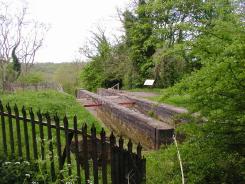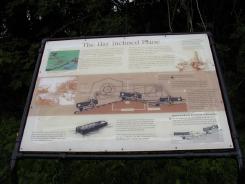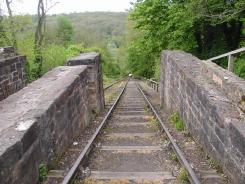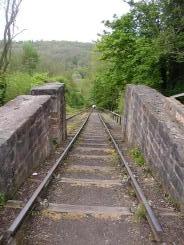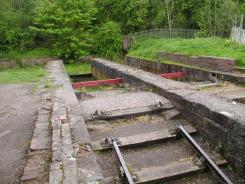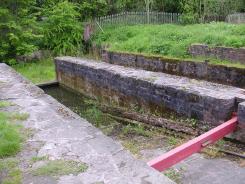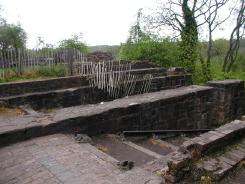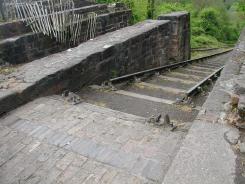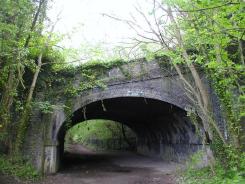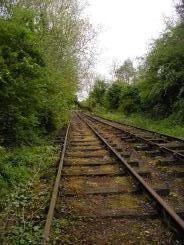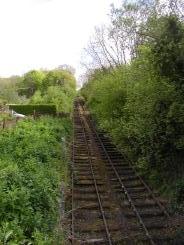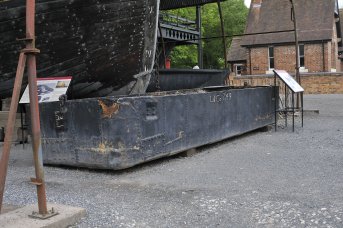Shropshire Canal Inclines
Hay
NGR SJ695027In 1788 William Reynolds proposed a canal joining the Donnington Wood canal of north Shropshire with the Severn, and pursuaded his father, Richard Reynolds, and two others, 'Iron Mad' John Wilkinson and Earl Gower (owner of the Donnington Wood canal and by now Marquis of Stafford, as well as Lord Privy Seal, Lord of the Admiralty, and Lord Chamberlain to King George III) to join him. Due no doubt to the powerful members of the company, they gained an act of Parliament empowering the enterprise, and work started that year. It started with an incline plane rising 120ft from the Donnington Wood Canal, the techniques for which had been perfected on the Ketley canal. However, instead of a top pound lock, the Shropshire Canal Inclines used a sloping end to avoid wasting water. The Donnington Wood incline needed a steam engine to power the lift, as the traffic was mostly uphill. It was opened in 1793. There were six other inclines in the area all providing the Shropshire coalfields with access to the Shropshire canal to allow distribution of coal. The inclines lasted about 100 years and the rails removed in 1910. The site has been tided and a restoration project is underway, it is part of the Blists Hill open air museum, Ironbridge, but can also be viewed from the Tar tunnel carpark not far away.
Ketley
Built in 1788 by William Reynolds it rose 73ft, carring boatloads of iron ore from the canal to the ironworks. This was a counter balanced incline using full wagons to rise unladen ones on this a double track incline. The boats were 20' by 6' by 3.8'. The incline slope was approx 1:2
Hugh Bridge
Opened 1790 it only had a 36' rise and closed by 1879, it was a steam assisted twin incline.
Trench incline
This opened in 1793 and was again a twin lift steam assisted, it had a rise of 75' and was 670' long and was the last incline in service closing in 1921.
Wrockwardine Wood
120' rise, opened in 1791 and closed in 1858.
Windmill
126' rise opened in 1791 and closed in 1858.
Brierly Hill
This incline was a tramway incline not a canal boat incline
